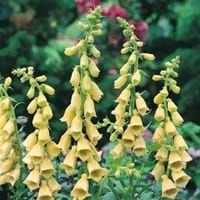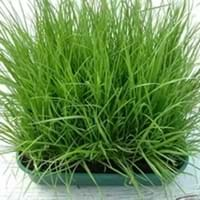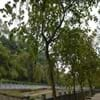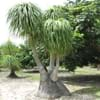Life Span
Biennial
Perennial
Type
Flowering Plants, Perennial
Grass
Origin
Southern Europe, Russia/Siberia, Turkey
Europe, Russia/Siberia, Western Africa
Types
Carillon, Temple Bells
Not Available
Habitat
Terrestrial
Grassland, Tropical regions
USDA Hardiness Zone
3-8
4-8
AHS Heat Zone
8 - 1
8 - 1
Sunset Zone
21,22
A1, A2, A3, 1a, 1b, 2a, 2b, 3a, 3b, 4, 5, 6, 7, 8, 9, 10, 11, 12, 13, 14, 15, 16, 17, 18, 19, 20, 21, 22, 23, 24
Habit
Upright/Erect
Clump-Forming
Flower Color
Light Yellow, Brown
Non Flowering Plant
Flower Color Modifier
Bicolor
Bicolor
Fruit Color
Non Fruiting Plant
Non Fruiting Plant
Leaf Color in Spring
Green
Dark Green
Leaf Color in Summer
Green
Light Green
Leaf Color in Fall
Green
Dark Green
Leaf Color in Winter
Light Green
Dark Green
Plant Season
Spring, Summer
Spring, Fall, Winter
Sunlight
Full Sun, Partial Sun
Full Sun, Partial Sun
Type of Soil
Clay, Loam
Clay, Loam
The pH of Soil
Neutral
Acidic, Neutral, Alkaline
Soil Drainage
Well drained
Average
Bloom Time
Early Summer, Summer
Early Summer
Tolerances
Not Available
Not Available
Where to Plant?
Ground, Pot
Ground, Pot
How to Plant?
Divison, Seedlings, Seperation
Seedlings
Plant Maintenance
Medium
Medium
Watering Requirements
Requires watering in the growing season
Average Water Needs
In Summer
Lots of watering
Lots of watering
In Spring
Moderate
Moderate
In Winter
Average Water
Average Water
Soil pH
Neutral
Acidic, Neutral, Alkaline
Soil Type
Clay, Loam
Clay, Loam
Soil Drainage Capacity
Well drained
Average
Sun Exposure
Full Sun, Partial Sun
Full Sun, Partial Sun
Pruning
cut main flower spike
No pruning needed
Fertilizers
All-Purpose Liquid Fertilizer
No fertilizers needed
Pests and Diseases
Downy mildew, Leaf spot, Powdery mildew
Bacterial Diseases
Plant Tolerance
Not Available
Drought
Flowers
Showy
Insignificant
Flower Petal Number
Single
Single
Fragrant Bark/Stem
No
Yes
Foliage Texture
Medium
Fine
Foliage Sheen
Matte
Glossy
Attracts
Not Available
Caterpillar, Insects, Moths
Allergy
Blurred vision, Confusion, Depression, Diarrhea, Disorientation, drowsiness, Fainting, Halos around objects, Headache, Irregular or slow heartbeat, Lethargy, Loss of appetite, Low blood pressure, Nausea, Rash, Stomach pain, Vomiting, weakness
no allergic reactions
Aesthetic Uses
Showy Purposes
Not Used For Aesthetic Purpose
Beauty Benefits
Not Available
Not Available
Environmental Uses
Air purification
Air purification
Medicinal Uses
No Medicinal Use
No Medicinal Use
Part of Plant Used
Whole plant
Whole plant
Other Uses
Used as Ornamental plant
Not Available
Used As Indoor Plant
No
No
Used As Outdoor Plant
Yes
Yes
Garden Design
Bedding Plant, Cutflower, Mixed Border
Lawns and Turf
Botanical Name
DIGITALIS grandiflora
LOLIUM perenne ssp. multiflorum
Common Name
Large Yellow Foxglove, Yellow Foxglove
Italian Ryegrass
In Hindi
पीला Foxglove
इतालवी ryegrass
In German
Gelber Fingerhut
italienisches Raigras
In French
Digitale Jaune
Ray-grass italien
In Spanish
Foxglove amarillo
raigrás italiano
In Greek
κίτρινο Foxglove
Ιταλικά ήρα
In Portuguese
Foxglove amarelo
azevém
In Polish
żółty naparstnica
życica wielokwiatowa
In Latin
Yellow Foxglove
Italian ryegrass
Phylum
Magnoliophyta
Tracheophyta
Class
Magnoliopsida
Liliopsida
Order
Scrophulariales
Poales
Family
Scrophulariaceae
Poaceae
Clade
Angiosperms, Asterids, Eudicots
Angiosperms, Commelinids
Tribe
Not Available
Not Available
Subfamily
Not Available
Pooideae
Number of Species
Not Available
Properties of Yellow Foxglove and Italian Ryegrass
Wondering what are the properties of Yellow Foxglove and Italian Ryegrass? We provide you with everything About Yellow Foxglove and Italian Ryegrass. Yellow Foxglove doesn't have thorns and Italian Ryegrass doesn't have thorns. Also Yellow Foxglove does not have fragrant flowers. Yellow Foxglove has allergic reactions like Blurred vision, Confusion, Depression, Diarrhea, Disorientation, drowsiness, Fainting, Halos around objects, Headache, Irregular or slow heartbeat, Lethargy, Loss of appetite, Low blood pressure, Nausea, Rash, Stomach pain, Vomiting and weakness and Italian Ryegrass has allergic reactions like Blurred vision, Confusion, Depression, Diarrhea, Disorientation, drowsiness, Fainting, Halos around objects, Headache, Irregular or slow heartbeat, Lethargy, Loss of appetite, Low blood pressure, Nausea, Rash, Stomach pain, Vomiting and weakness. Compare all the properties and characteristics of these two plants. Find out which of these plant can be used as indoor plant. If you are interested to decorate your house and garden, find out aesthetic uses, compare them and select the plant which will beautify your surrounding. Along with beautification, try comparing medicinal and edible uses of Yellow Foxglove and Italian Ryegrass and you can choose the plant having best and most benefits.
Season and Care of Yellow Foxglove and Italian Ryegrass
Season and care of Yellow Foxglove and Italian Ryegrass is important to know. While considering everything about Yellow Foxglove and Italian Ryegrass Care, growing season is an essential factor. Yellow Foxglove season is Spring and Summer and Italian Ryegrass season is Spring and Summer. The type of soil for Yellow Foxglove is Clay, Loam and for Italian Ryegrass is Clay, Loam while the PH of soil for Yellow Foxglove is Neutral and for Italian Ryegrass is Acidic, Neutral, Alkaline.
Yellow Foxglove and Italian Ryegrass Physical Information
Yellow Foxglove and Italian Ryegrass physical information is very important for comparison. Yellow Foxglove height is 60.00 cm and width 30.00 cm whereas Italian Ryegrass height is 45.70 cm and width 30.50 cm. The color specification of Yellow Foxglove and Italian Ryegrass are as follows:
Yellow Foxglove flower color: Light Yellow and Brown
Yellow Foxglove leaf color: Green
Italian Ryegrass flower color: Non Flowering Plant
- Italian Ryegrass leaf color: Dark Green
Care of Yellow Foxglove and Italian Ryegrass
Care of Yellow Foxglove and Italian Ryegrass include pruning, fertilizers, watering etc. Yellow Foxglove pruning is done cut main flower spike and Italian Ryegrass pruning is done No pruning needed. In summer Yellow Foxglove needs Lots of watering and in winter, it needs Average Water. Whereas, in summer Italian Ryegrass needs Lots of watering and in winter, it needs Average Water.





